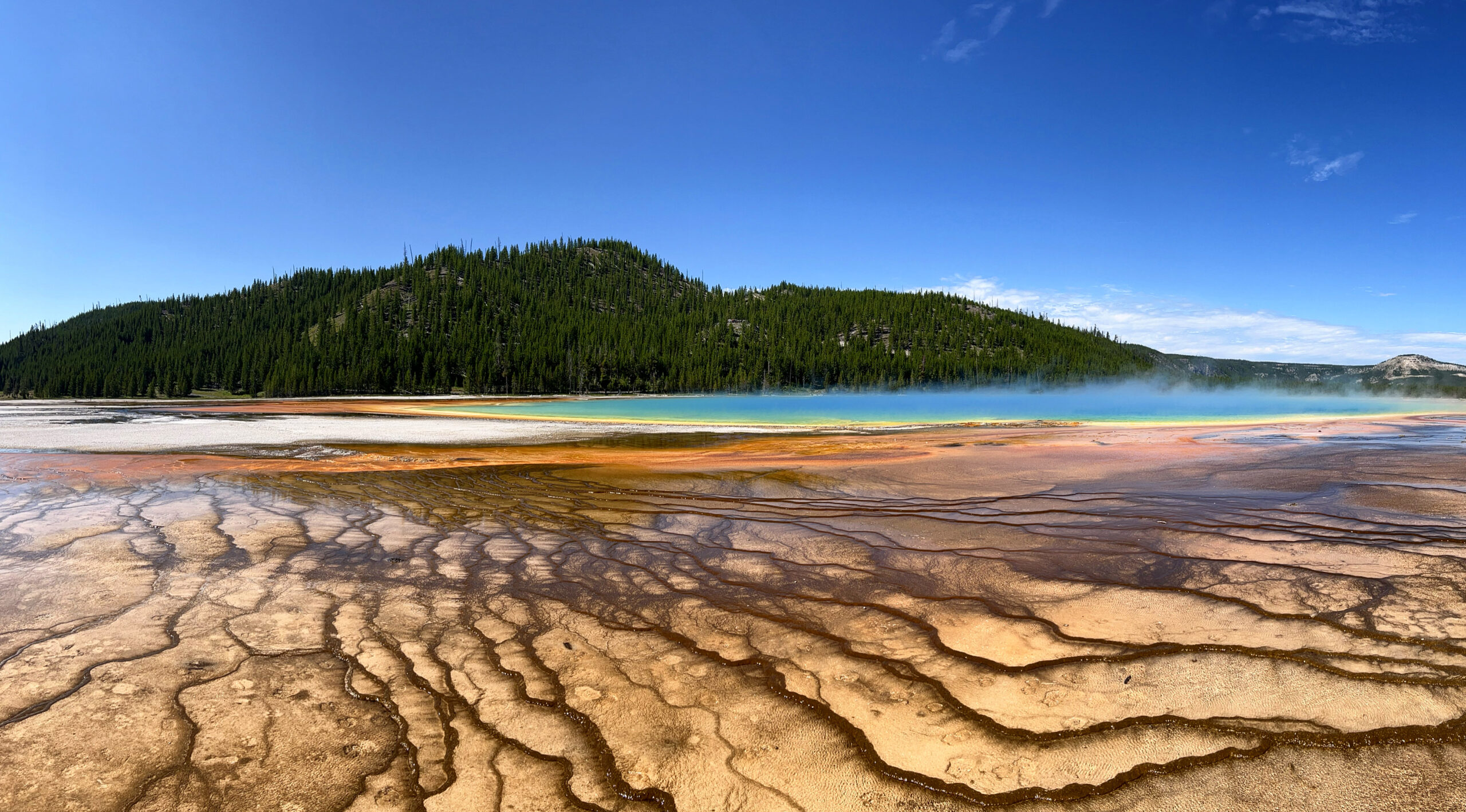A few weeks ago, I joined the rest of my family for a summer vacation in rural Star Valley Ranch, Wyoming. We spent half of the week cooped up in our cabin due to a never-ending series of thunderstorms, reading on the porch while cuddled in a blanket or sitting around the table playing card games. But for most of the week, we were able to explore and enjoy the natural beauty that surrounded us in every direction.
For the first time in my life, I visited Yellowstone National Park. The park rangers gave my family a surprise when they waved us through the entrance without paying the entrance fee, having arrived on the day that the National Park Service was commemorating the passage of the 2020 Great American Outdoors Act. I was awed by the beauty of Yellowstone from the moment that we entered the park, following a meandering stream surrounded on either side by seemingly endless landscapes of trees. And even though some of the most popular sights felt more akin to a crowded amusement park, I marveled at the sight of Old Faithful erupting from the ground ground, at the colorful rings of living microbial mats surrounding the Grand Prismatic Spring, and at the bubbling mud pots next to the pristine blue waters of Yellowstone Lake.
While in Yellowstone, we were also surprised to learn that we had unwittingly decided to visit Yellowstone during the park’s 150th anniversary. This first national park–America’s “greatest idea”–sparked an international movement, leading to the creation of over 4,000 national parks across the globe, a fact highlighted by Barack Obama’s recent Netflix docuseries, “Our Great National Parks.” This includes 63 national parks in the United States, five of which are here in the great state of Utah.
It’s easy to appreciate the public lands that have been set aside and preserved for our enjoyment, education, and inspiration and that of future generations. However, the benefits of conservation extend beyond our being able to access nature and enjoy its beauty. We need to continue building on the legacy of our national park system by preserving more natural spaces around us.
Shortly after his inauguration, President Biden committed the country to “conserving at least 30 percent of our lands and waters by 2030.” Responding to the president’s executive order, the Natural Resources Defense Council claimed it was “necessary to reverse nature’s decline, fight climate change, and secure the natural life support systems we depend on for clean air and water, food, and quality of life.” Furthermore, the NRDC said that it “should create more equitable access to nature, bring communities together to conserve our shared natural heritage, honor tribal sovereignty and self-determination, and strengthen our economy.”
Despite the known benefits of conservation, it continues to be a struggle. Utah’s political leaders just filed a lawsuit against the Biden Administration for his actions restoring the original boundaries of the Bears Ears and Grand Staircase-Escalante National Monuments. We may have narrowly avoided a project to drastically change the ecosystem of Utah Lake for the construction of private island developments. And our state is only just beginning to realize the lengths to which we’ll have to go to save the Great Salt Lake from drying up entirely.
But Utahns support protecting public lands. A 2019 report found that two-thirds of Utahns wanted Congress “to place more emphasis on protecting water, air quality and wildlife habitat.” A 2019 poll found that 64% of Utahns supported keeping Bears Ears National Monument at its original size. According to the Deseret News, “64% of Utahns consider themselves conservationists and 75% think that public lands where wildlife migrate each year should be protected from oil and gas exploration.”
Imagine how different the world would be today if 150 years ago, our leaders didn’t have the foresight to set aside the wonders of Yellowstone for preservation. We need to continue speaking out in support of conservation and fighting back against the misguided policies and decisions of public officials that threaten our public lands. By 2030, 2050, or 2172, I hope that future generations will be able to look back with gratitude for the lands that we set aside today.

